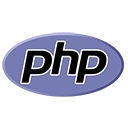Welcome to the world of PHP! PHP is a popular server-side scripting language that is widely used for web development. This beginner's guide will help you understand the basics of PHP and get you started on your journey to becoming a PHP developer.
1. Introduction to PHP
Let's start by understanding what PHP is and why it's a valuable language for web development.
2. Setting Up Your Development Environment
Before you start coding in PHP, you'll need to set up your development environment. This section will guide you through the process of installing PHP, a web server, and a code editor.
a. Installing PHP
Learn how to install PHP on your local machine or a web server.
// Example code for installing PHP on a Linux server
sudo apt-get update
sudo apt-get install php
b. Choosing a Code Editor
Discover popular code editors for PHP development, such as Visual Studio Code or PhpStorm.
3. Your First PHP Script
It's time to write your first PHP script. We'll cover the basic syntax and structure of a PHP program.
a. Hello World
Write a simple "Hello, World!" program in PHP to get a feel for the language.
echo "Hello, World!";
?> 4. Variables and Data Types
Learn how to declare variables and work with different data types in PHP.
a. Variable Declaration
Understand how to declare variables and assign values to them.
$name = "John";
$age = 30;
b. Data Types
Explore PHP's data types, including strings, numbers, booleans, and arrays.
$name = "John"; // String
$age = 30; // Integer
$isStudent = true; // Boolean
$colors = ["red", "green", "blue"]; // Array
5. Control Structures
Dive into control structures like if statements, loops, and switch cases to make your PHP programs dynamic.
a. If Statements
Learn how to use conditional statements to make decisions in your code.
$age = 25;
if ($age >= 18) {
echo "You are an adult.";
} else {
echo "You are a minor.";
}
b. Loops
Understand how to create loops for repetitive tasks using for and while loops.
for ($i = 1; $i <= 5; $i++) {
echo "Iteration $i
";
}
6. Functions
Functions allow you to encapsulate blocks of code for reuse. Learn how to define and call functions in PHP.
a. Function Declaration
Create your own functions with parameters and return values.
function greet($name) {
return "Hello, $name!";
}
7. Working with Forms
Explore how to handle HTML forms in PHP, including form submission and data processing.
a. Form Creation
Create an HTML form for user input.
b. Form Processing
Process form data using PHP scripts.
$username = $_POST['username'];
echo "Hello, $username!";
8. Conclusion
Congratulations! You've taken your first steps in the world of PHP. With the knowledge gained from this guide, you can continue exploring PHP's capabilities and build dynamic web applications. Practice, experimentation, and building real projects are key to becoming proficient in PHP development.
This tutorial provides a comprehensive overview of getting started with PHP. To become proficient, further development, testing, and exploration of advanced PHP concepts and frameworks are encouraged.

